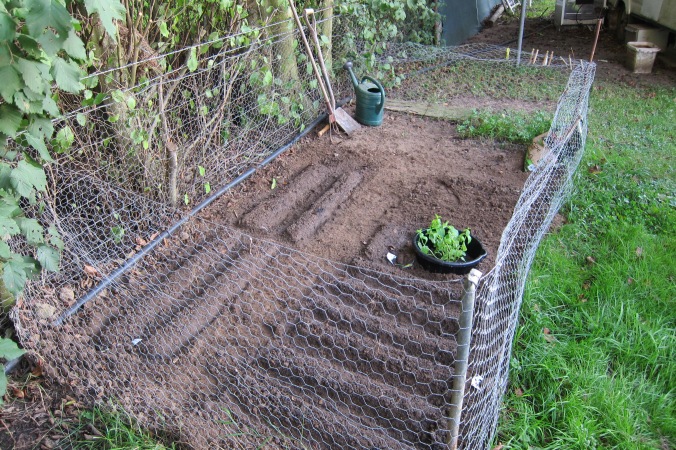My last post, was about my plans to plant a very small plot of land, next to where i live on the farm – mainly with salad leaves or herbs. I took a picture, before i weeded and dug the soil. I am happy to say, i have just planted my very first salad leaves and herbs. And a picture paints a thousand words, which is about how many seeds i have sown actually. So here it is in all it’s glory, my plot revisited:

Top right: My friend’s parsley which is all that is left of the herbs he planted – parsley, along with being very tasty – is a very hardy plant.
Middle: A bottomless bucket, containing a little mint plant from my local supermarket. A bit of an experiment; i am not sure if it will survive — so fingers crossed.
Bottom Right: Lettuce, and a mix of peppery salad leaves (– due in 7 days)
Bottom left: Spring onions (– due in the New year)
Middle left: (above the onions) Spinach (–due in 7 days)
Talking of Spinach; we have just planted some fresh spinach on the farm. So to contrast with my little plot, i will show you what we do at work, to sell to the public at markets and in the shops:

This is one of our salad tunnels. You can see the soil already has been prepared, and we are making the beds to plant the salad leaves. The beds have been formed already and we now lay the drip irrigation lines (pipes), on top, and cover with a sheet of biodegradable plastic (which keeps the moisture in the soft raised beds). As you can see the beds are much larger than the little beds i made in my plot, and will hold 3 or 4 rows of spinach plants. Actually they were planted yesterday, this was taken the day before, so now the little spinach plants which are bought from the nursery, are nice and cosy and have been covered with large sheets of white fleece material to keep the warmth and moisture inside. My plot: food for a me – maybe a few others. My boss’s plot: food for a good few hundred – or more.
If my seeds do not germinate, all is not lost – i suppose.